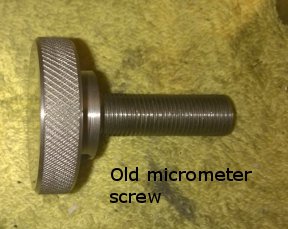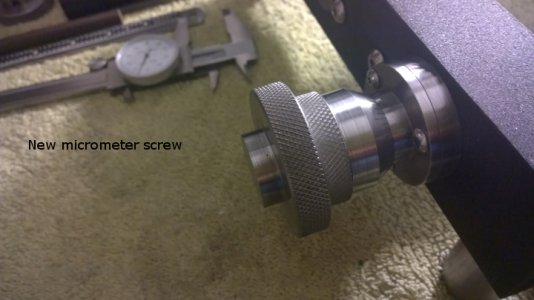I decided to finish up the micrometer bar today. I learned something today also. I made the split cotter for the front bar clamp from steel. The bar is steel and the frame is steel. I found the cotter would not grip good enough, so I made another one from aluminum. The aluminum cotter grips much better. I only have one other steel cotter and it seems to be ok, but it is also twice as big. So it seems the cotters made from softer metal work better than a hard cotter.
I also noticed that since making the new micrometer screw with a better fit, the micrometer stays put when the bar is rotated. it seems the micrometer lock won't be needed, but I will make it later just in case. I center drilled the end of the front bar and used Lok-tite to secure a 3/8 steel ball bearing in the end of the bar. This is so the contact point between the bar and the micrometer screw is very small. This reduces friction to almost none , especially with a little dab of light grease on the end of the screw. this also is why the micrometer stays put when the bar is rotated.
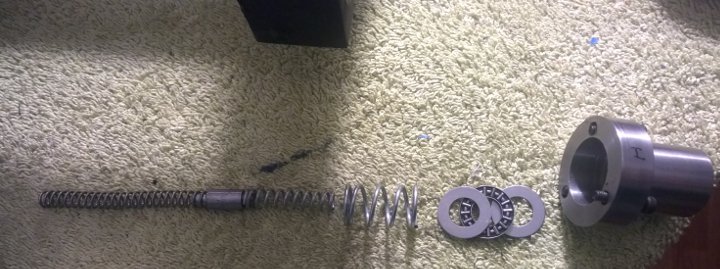
These are the parts for the other end of the micrometer. Some springs, a thrust bearing and the end cap. I was experimenting with different springs as I did not know how heavy they need to be. The combination I have seems to be pretty good. The long spring goes in a hole drilled in the end of the front bar and presses against the rear end of the cap. There is a 5/16" steel ball bearing in the hole in the bar for the spring to seat against. this greatly reduces any friction for rotation of the bar. The second spring is a heavier spring and seats between the end of the bar and the thrust bearing in the end of the cap. This eliminates any friction here also. With this set up the micrometer works extremely smooth and effortlessly. I can over come the springs, but it takes both hands. There is a good bit of pressure to keep the tool against the grinding wheel. One advantage to this arrangement , is the tool travel towards the stone is a solid stop. Any give to over come the spring would move the tool AWAY from the grinding wheel, But that won't happen as the grinding force is light. This machine is not meant to do heavy grinding.
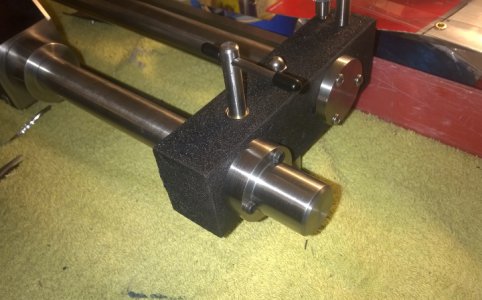
This is the end cap installed with the springs and bearings. I will make a print to match this setup. I started out building a Bonelle grinder with a few of the Quorn features, but a while back I abandoned that plan and have been building what I want as I go Because the Bonelle had some short comings and the Quorn had a lot of short comings. I guess this is why no two are ever alike.
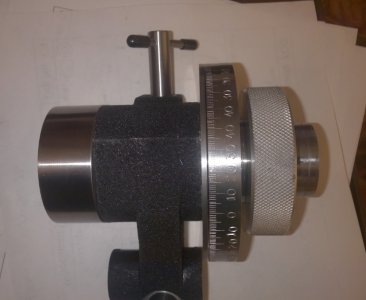
I also engraved the 360 degree markings on the tool holder index wheel and stamped the numbers. the numbers are stamped 0 - 10 - 20 - 30 - 40- 40 - 30 - 20 - 10 - 0. This sequence is repeated in every 90 degree quadrant. In reading what I found on the Quorn and Bonelle, This has to something to do with indexing tools to sharpen. I personally was just going to number 0 - 360, but still can later if desired. ( I would just machine the numbers off and re stamp them).
When I mark the rotary base table, I will mark it every 5 degrees as it is only 3 inches in diameter. This one was 4 inches diameter and the lines are close. My eyes aren't that good.


